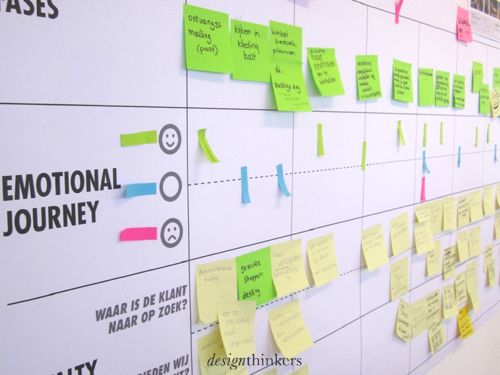This season, I traveled from my Seattle home to the Classical:NEXT (@ClassicalNEXT) conference in Rotterdam and the League of American Orchestras (@OrchLeague) conference in Detroit. Honestly, I often dread these events. While it’s exciting to see so many arts leaders come together, the points of discussion feel the same every year: we need to reach more people through better marketing, more diversity, and increased financial resources.
However, this year, I felt new energy pushing for innovation and creative problem-solving. With this in mind, I compiled a list of the 3 hottest topics in classical music presenting:
1. Increased Focus on Audience Experience
“Looking at every touch point an audience member has (from social media, buying a ticket, to arriving at the hall and leaving), classical music presenters are becoming aware that the audience experience is just as important as artistic quality and excellence.”
It’s no longer enough to put great music onstage. Even if Tchaikovsky’s ghost appeared to conduct his 1812 Overture, it wouldn’t matter if audience members had trouble buying tickets, or worse, felt unsure about concert formalities.
 Organizations are shifting their attention to audience members’ experience, asking, “How can we improve or enhance audience experience to provide a deeper interaction with or perspective on the art?” This question is difficult to answer because an organization must examine touch points with the patron in every department: ticketing, marketing, education, fundraising, concert production, etc. In large organizations where departments are separate from one another, tackling audience experience requires a holistic perspective.
Organizations are shifting their attention to audience members’ experience, asking, “How can we improve or enhance audience experience to provide a deeper interaction with or perspective on the art?” This question is difficult to answer because an organization must examine touch points with the patron in every department: ticketing, marketing, education, fundraising, concert production, etc. In large organizations where departments are separate from one another, tackling audience experience requires a holistic perspective.
I was delighted that @AustinOpera created a new senior-level position called the Director of Audience Experience. This person unifies all departments to ensure a seamless experience for patrons. He or she even spends a week in residency with the Four Seasons Hotel to learn best practices in retaining audiences, increasing patron engagement, and more. This is a giant step in understanding and measuring the effect of audience experience on the overall experience of the art itself.
2. Drastic Steps Needed in Diversity Building
“As classical music presenters, we cannot expect to diversify our audiences (in terms of age, ethnicity, or gender) if we do not first diversify what’s on stage.”

After winning the 2017 Grawemeyer Award for Music Composition, American composer Andrew Norman spoke to the systemic issues in classical music in an interview with NPR.
“This award has been given to three women out of its 30-year history. And to me that’s kind of an issue. And in all honesty, I’m a white man and I get lots of commissions and there are systemic reasons for that, reasons we should all be talking about. There are so many talented composers out there. Rather than giving me another commission, why aren’t we giving those people a commission?”
While the topic of diversity in classical music has been at the forefront for over a decade, the tone has clearly shifted at conferences. For example, at Classical:NEXT, a session attendee challenged the room by saying,
This sentiment was equally strong at the League of American Orchestras. Sessions included an open sharing of successes and failures in musician and audience diversification.
If your organization is not yet discussing how to diversify what’s on stage, the need is great and the time is now. Diversifying your stage will result in exciting new channels for audience growth and a redefined commitment to artistic excellence.
3. #Print-is-Dead in Classical Music
“We are beyond the day when it’s sensible for print advertising to be your top dollar marketing line-item. People spend an average of 16 minutes a day reading the newspaper and 50 minutes a day on Facebook. If sponsored social media advertising is not at the top of your marketing budget, think again.”
Facebook can be a challenge. How can a nonprofit in a busy corporate world compete in such a fast-paced, impulse-driven adspace, especially when your product is classical music, which is all about slowing down to appreciate great art?
It all comes down to two key elements:
(1) your message, and (2) how you deliver it.
Harnessing Facebook to target an audience means you can reach people who love classical music. But you can also reach people who identify themselves as adventurous or who also like the Bach Cello Suites.
To do this well, you need a strong message. Text is important, but it’s much more effective alongside visually engaging photos and videos that communicate your music’s value. Of course, size these photos and videos appropriately for Facebook to deliver the maximum impact.
Furthermore, snapping a few photos from your dress rehearsal isn’t enough to maximize the potential of social media. Your social media streams should instantly tell patrons who you are, why you’re valuable, and why they should spend an evening of their busy lives with your music.
It’s a lot to think about, and Molina Visuals is here to help. Our work ensures that your audience feels the passion of music through your photos, videos, websites, print materials, and more. As a global team, we’re ready to dream up something innovative for you and your unreached audiences. Feel the magic by browsing our Case Studies.
Ask me about Strategy, visuals, or the ghost of Tchaikovsky by emailing me at andrew@molinavisuals.com or connecting on Twitter: @DailyClassical
